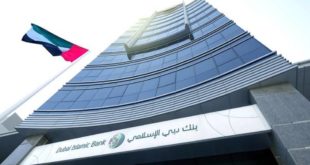Sharjah, July 24 / The United Arab Bank recorded during the first half of this year a net profit of 120.5 million dirhams, compared to a net profit of 83.3 million dirhams in the same period of 2022, an annual increase of 45%.
The growth in net profit comes as a result of improved operating performance, lower expected credit provisions, cost management and a prudent risk management approach, resulting in lower cost of risk.
Contributing to the financial performance of UAB was the great progress achieved in the core business, which recorded a 12% increase in total operating profit in the first half of 2023 compared to the same period last year, due to an increase in net interest income by 36%.
Impairment costs also recorded a significant decline of 59% in the first half of the current year as the bank was able to improve the underwriting of its new portfolio in high-quality assets, achieving higher returns.
The bank also succeeded in increasing its capital base by issuing additional non-convertible tier 1 financial instruments “AT1” by $150 million, which boosted the bank’s capital adequacy (CAR) to 19.6% and raised the tier 1 capital ratio “AT1” by 18.5%, both of which are well above the limits of regulatory requirements.
The Bank’s liquidity position remains strong as evidenced by the lending to stable resources ratio of 82% and the eligible liquid assets ratio of 18%, both of which well exceed required regulatory requirements.
UAB also regularly calculates the Liquidity Coverage Ratio (LCR) and Net Stable Funding Ratio (NSFR) both of which are well above 100% (the regulatory hurdle for banks that are required to comply with these ratios) although this is not a regulatory requirement.
Evidence for the bank’s prudent provisioning approach and its commitment to maintaining adequate provisioning coverage again is its ratio of 110% in the first half of 2023, while the non-performing loan ratio was 6.7%, a significant improvement compared to 10% in the first half of 2022.
The bank continues to focus on developing its core business and revenues through transactions and banking services for companies, institutions, individuals and financial markets, while moving towards a more flexible operating model integrating digital solutions and capabilities to become the preferred banking partner for its customers.
His Excellency Sheikh Faisal bin Sultan bin Salem Al Qasimi, Chairman of the Board of Directors of United Arab Bank, said: “We are pleased with the financial performance in the first half of 2023, as the bank continues its path according to a well-thought-out strategy that promotes growth and is in line with the expectations of shareholders.
For his part, Shrish Bedeh, Chief Executive Officer of United Arab Bank, said: “The growth in the bank’s net profits during the first six months of 2023 reflects a strong performance in all aspects of the business. These results confirm that we are on the right track consistently and sustainably to achieve our strategic and financial goals in the short and medium term.”
He added: “We will continue to strengthen our relations with our customers and work to expand the customer base in various business sectors in a measured manner, in line with our risk management standards. We will continue our efforts to provide our customers with products and solutions that help them achieve their financial ambitions. We are committed to using the latest technology to provide simpler and more flexible banking services and products.”
It is worth noting that Fitch Ratings, one of the largest credit rating agencies in the world, affirmed the bank’s long-term credit rating at (BBB+), with an affirmation of a stable outlook, and raised the bank’s viability level (VR) rating to (b+).
 Media ININ Economy We Trust
Media ININ Economy We Trust








